I’m finally going to begin what I’ve promised I’d begin- a series of posts about our homeschooling routine and our resources. The hardest thing about homeschooling is getting started. I know a lot of young moms and dads are completely baffled about how to begin, and the thought of educating their children is terrifying. But I believe in you- you can do it!
As I’ve stated very clearly before, reading is the most essential element of education. Reading is much, much more than looking at letters and words. Reading comprehension is absolutely crucial. You can read more about my reading philosophy by clicking the link in my sidebar. I am 100% in favor of phonics when it comes to reading education. Two of the best books I have seen are Let’s Get Ready For Kindergarten and Let’s Get Ready For First Grade. These books are available by Cedar Valley Publishing. They cover more than teaching reading- they are a condensed summary of the first two years of education. Educators (and to you homeschooling parents- that means YOU) can use them as a scope and sequence for the basics, for what the child should be learning that year (colors, numbers, etc for Kindergarten; subtraction, geometric shapes, etc for First Grade). I like these books a lot, and wish I’d had them for my own children when they were young.
<
Let’s Get Ready For Kindergarten addresses the basic curriculum for kindergarten. You could even use it for preschoolers. The book is extremely durable (laminated thick cardboard pages). I love the bright colors and very clear illustrations. This book covers the alphabet, colors, basic shapes, numbers and counting, money, opposites, seasons, weather, telling time, the calendar, and more. Each page is very basic- you should develop your own activities based on what is addressed in the book. For example, there’s a page about the different seasons of the year. What you can do is- throughout the year- start a notebook and fill it with words, pictures, and leaves throughout the seasons. My kids had a three-ring binder that we filled with the leaves of spring, the weather we saw during the spring season, and the birds and bugs we noticed. We looked up the different kinds of leaves and birds in the encyclopedia and drew pictures of them, and wrote their names in the notebook. We did this for spring, summer, autumn, and winter. This fulfilled the requirements for science (noticing weather patterns and collecting leaves), for language (by using the encyclopedia and watching mommy write letters), for art (drawing the birds and flowers), and more. Let’s Get Ready For Kindergarten will not teach your child for you, but will give you the tools and basic information you need to know what to teach the child. And because the pages and the book in general are durable, the child can flip through the book himself, too.
Let’s Get Ready For First Grade is similar, and advances to the next step of development. Now that the child has learned numbers and letters, the child can advance to learning basic addition and subtraction, and learning the phonetic alphabet.  I love that these books emphasize phonics for reading. This book addresses things like vowels, consonants, punctuation, compound words, ordinals, graphs, solar system, money, measurement, shapes, and government structure. You can really get creative with this. For example, print a picture of the Supreme Court building, and allow the child to find the different shapes that form the building (the columns are rectangles, the pediment is a triangle, etc). The child can trace the shape and color them. As he colors, you can explain what the Supreme Court does. This fulfills requirements for art (coloring), spacial skills and geometry (finding and drawing shapes) and civics (government function). Let’s Get Ready For First Grade takes the very basics of what is necessary for First Grade (or sooner, if you want to get ahead), and you can go from there. The only limit is your own creativity!
I love that these books emphasize phonics for reading. This book addresses things like vowels, consonants, punctuation, compound words, ordinals, graphs, solar system, money, measurement, shapes, and government structure. You can really get creative with this. For example, print a picture of the Supreme Court building, and allow the child to find the different shapes that form the building (the columns are rectangles, the pediment is a triangle, etc). The child can trace the shape and color them. As he colors, you can explain what the Supreme Court does. This fulfills requirements for art (coloring), spacial skills and geometry (finding and drawing shapes) and civics (government function). Let’s Get Ready For First Grade takes the very basics of what is necessary for First Grade (or sooner, if you want to get ahead), and you can go from there. The only limit is your own creativity!
In the next few posts, I’ll talk about other helpful books and offer tips on what worked for us. Homeschooling is very fluid and flexible. People have asked me how on earth I find the time to do everything that I do. I can only answer that homeschooling is a lifestyle- you find out ways to educate your child with everything you say and do. It grows on you, too. In the beginning of homeschooling, structure is very important. The child must have a set time to work and a set time to play. The child must accomplish goals and he must realize from the start whether he is accomplishing them correctly. Expect to spend a lot of time with the child for the first 4 to 5 years of homeschooling. After that, however, the successful discipline really shows and the homeschooling child becomes independent and responsible much quicker then the public-schooled child.






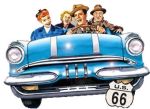 Here is where I express my zany, creative, motherly side. Read more
Here is where I express my zany, creative, motherly side. Read more 




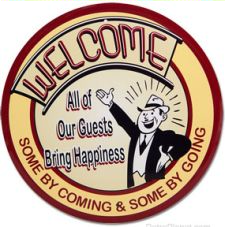



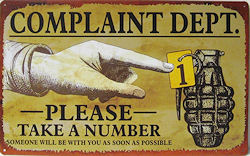
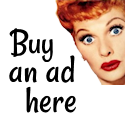


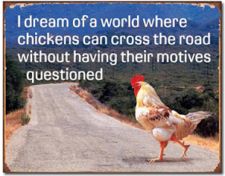

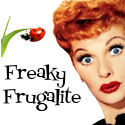

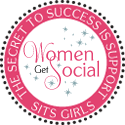


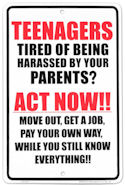


Trackbacks/Pingbacks
[...] Freaky Frugalite - Let’s Get Ready For First Grade is similar, and advances to the next step of development. Now that the child has learned numbers and letters, the child can advance to learning basic addition and subtraction, and learning the phonetic alphabet. I love that these books emphasize phonics for reading. [...]